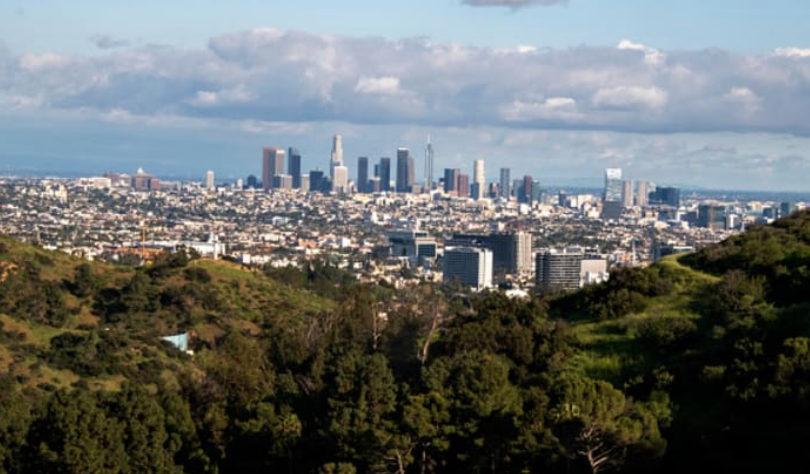How Has The Pandemic Changed Our Environment?
February 3, 2021
You’re driving down the 405, it’s a Friday evening. You look to your right and see miles of traffic, pollution lingering above it. To your left you see the moon – warped and red, climbing higher into the sky.
However, for the past year, Los Angeles has had some of the best air quality out of the majority of the nation’s heavily populated cities. Seemingly 90% of LA’s commuters were working from home, meaning less cars on the roads. Simultaneously, factory production decreased as people became more self-sustained, meaning less industrial emissions.
Nights have become quieter and clearer – now, the whole neighborhood can hear a group of crickets chirping.
It’s a very well-known fact that Climate Change has been progressing exponentially in recent decades, will the effects of quarantine serve as something of a blank (or somewhat tidied) slate? Climate scientists have been adamant that 2020 was a “make or break” year for climate change, perhaps the pandemic couldn’t have come at a more convenient time. We have a reduction of noise, atmospheric pollutants, light pollution, and less environmental restoration disruption (although slowly climbing back to pre-pandemic levels) — but is this healing enough to withstand the pollution that will soon reappear after the pandemic?
According to NASA and the European Space Agency who have been collecting data on changes in Earth’s surface, deforestation rates are changing in some places, air pollution is diminishing, water quality is improving, and snow is becoming more reflective in some areas since the pandemic began. They found that Industrial activities in India, including extracting and crushing stone for construction projects, slowed or halted because of COVID-19 lockdowns, leading to dramatic drops in measured air pollution. Likewise, in New York the water has become clearer in the western Manhattan area because there were fewer people commuting to Manhattan during the lockdown, water turbidity [how water clarity is affected by particulate matter and pollution] decreased across the US. Similarly, in LA’s La Ballona Creek, water turbidity has decreased with diminished amounts of motor-oil runoff and other chemicals from roads.
Although the environment has temporarily changed with humans at home and coyotes, skunks, and squirrels able to roam the streets and enjoy clearer ocean and river water, environmental scientists have warned against getting our hopes too high or compensating for lack of pollution by expending more fuel and water. The positive environmental effects of global-quarantine are merely short-term and are predicted to rebound once the pandemic nears its end as the world returns to ‘business as usual.’ As the first country to shut down, and one of the earliest to start reopening, China’s dramatic air quality improvements, seen as manufacturing and transportation largely came to a halt in February and March of 2020, have now vanished, a possible precedent for other countries.
Once we return to pre-pandemic behaviors, our water and air quality will likely revert as well. Though, with the Biden-Harris administration’s claimed commitment to fighting climate change, perhaps as pre-pandemic activities and the pollution from them again starts to rise, those levels may be somewhat lower. Hopefully, the electric car legislation recently passed in California, the US rejoining the Paris Climate accord, and many businesses converting to online markets and at-home work environments may be enough to compensate for our normal activities and the regulatory rollbacks of ‘Big Polluter’ industries granted by the previous administration during the recession.

























































